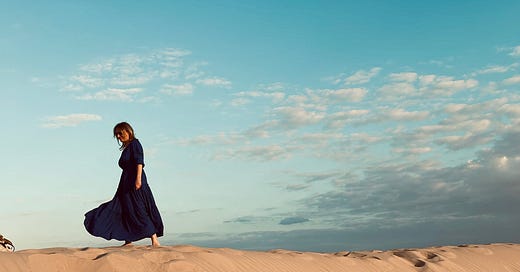Hello hello, my goodness, time flies and only now I am able to update my blog on the rest of my travels in Egypt. My laptop charger was stolen somewhere between the end of my trip in Siwa and arrival in Aswan so I didn’t get to write anymore. :-(
Also my Remarkable 2 (the device I journal on) broke down. The on button was stuck on on mode. I was covered in mosquito bites, tired from traveling after 7 weeks on the road, serisouly homesick and getting cranky. So I took a difficult decision: I cut my Egypt trip short and decided to travel back another time to visit Luxor and the red sea.
Anyway, surely no one is interested in my sob story (myself included haha!) so let´s get into the SIWA magic, shall we?
Traveling to Siwa: A massive adventure!
I am not exaggerating. Getting to Siwa is a whole adventure on its own. Siwa is very far from Cairo, right by the Libyan border. There’s no fast train nor plane that goes there so all you can do is take an overnight bus or van to go direct, or hop on a day bus to Marsa Matrouh, a beautiful coastal town, and then switch bus to get to Siwa.
I opted for the minivan. While far less space to sit than in a bus, I wanted to get to Siwa as quickly as possible. The bus would have taken 2-3 h longer.
No matter what method of transport you take: you’ll end up in military police checks multiple times. Sometimes they might have you exit the van and will inspect your luggage or passport, both on the way to Siwa and on the way back also.
Needless to say, you’ll get zero sleep in and will arrive in Siwa dead tired. As I am a smart traveler, I anticipated this and planned accordingly. :D I didn’t adhere to the 2 day itinerary most people go to Siwa for. I stayed 4 full days. And that was exactly what I needed.
First Impressions of Siwa: A World Untouched by Time
Arriving in Siwa feels like stepping into another era. This remote oasis is a lush paradise in the middle of endless desert landscapes. Surrounded by swaying palm trees, sparkling salt lakes, and earthen buildings that blend seamlessly with the environment, Siwa is truly a world apart.
But let’s dive into the history, because this place is not just a visual treat—it’s layered with stories that span millennia.
A Peek into Siwa’s Rich History
Siwa Oasis has been inhabited for over 12,000 years, and its people are distinct from other Egyptians. The Siwan Berbers have their own unique language and traditions. In antiquity, Siwa was famed as the site of the Oracle of Amun, one of the most renowned oracles in the ancient world. Even Alexander the Great couldn’t resist visiting this sacred site in 331 BCE to consult the oracle about his destiny. It’s said that the oracle confirmed him as a god, forever intertwining Siwa with his legacy.
Today, wandering through the ruins of the Temple of Amun or the Mountain of the Dead, you can almost hear the echoes of the past.
Siwa temple/ Oracle of Amun (how I connected to the spirit oracles & had a political conversation)
I love nothing more than traveling to ancient temples or spiritual sites to feel the energy. I was excited to explore the oracle site. It was my favourite part of Siwa in fact. Not just because of its beauty - but because I sat down to meditate and see if I could connect to an oracle that was still earthbound. And I didn’t have to wait long. There were 13 ancient oracles in spirit form who were acting as the land spirits, the protectors of the sacred site. Maybe there were more but these 13 were eager to connect to me.
They told me about their connection to Sirius and that when they used to channel back in the day, that’s the wisdom and the energy they were channeling from. They all were old souls who came from ancient civilisations outside of this planet and incarnated here to help humans raise their consciousness.
As I knew about the story of Alexander the Great traveling far to meet them to ask whether he would become a pharaoh of Egypt (and they said yes) I was intrigued to find out more. I had a suspicion they only said yes back then because they were afraid of what would happen if they said no. Alexander the Great was the first foreigner to come into Egypt and become a pharaoh. I asked the spirits if my suspicion was correct and they immediately told me I was right.
They had access to different timelines of reality they told me. They could see what would happen to Egypt if Alexander the Great were to invade Egypt in a hostile way. They saw what would happen to Siwa and the Temple if Alexander wasn’t pleased with their answer. And so they lied. Made him believe he was indeed a descendant of God, ready to become pharaoh. They fed his massive ego and probably saved a lot of lives that way. :-)
As we were talking politics I couldn’t resist to ask about current world affairs. It was one day before the US election. I asked them who would win: Harris or Trump. To me, and many others outside the US (but also inside of the US) they both represented the pest and cholera. Harris coming from a genocidal administration who have been funding genocide for over a year with american tax dollars, and I don’t think I need to write anything about Trump. So in terms of bringing peace to the Middle East and justice for Gaza/ Palestine I knew none of them would do their job.
The oracles shot out their response immediately: Trump would win. He would bring chaos to the US and the world on a massive scale. He would disrupt and destroy. Yet, the oracles also said: “sometimes that’s what’s needed for the world to wake up, for revolutions to happen, for change to be initiated.”
They told me I could always meditate and connect to them, even when abroad. They would help me channel. I loved them for their “no nonsense” way of being. For their gifts of seeing political landscapes over the millenia, and maybe seeing a bigger picture I cannot see or am afraid to see.
The next day I was on my way to visit the salt lakes of Siwa. I was sitting on the back of a tuktuk crying because indeed Trump had won. I would have cried had Harris won too, let’s be clear. I was and still am so tired of US foreign policy and the EU’s complicity in genocide. It’s all too much for my loving heart.
Anyway, enough of politics for now, let me show you a few pictures of this temple. :-)

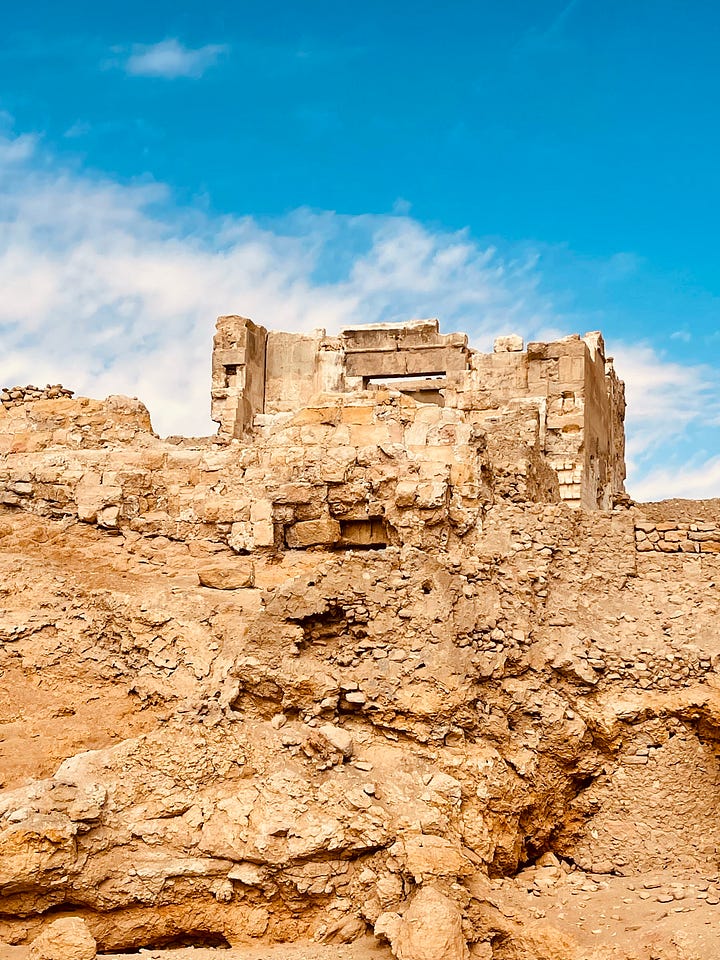
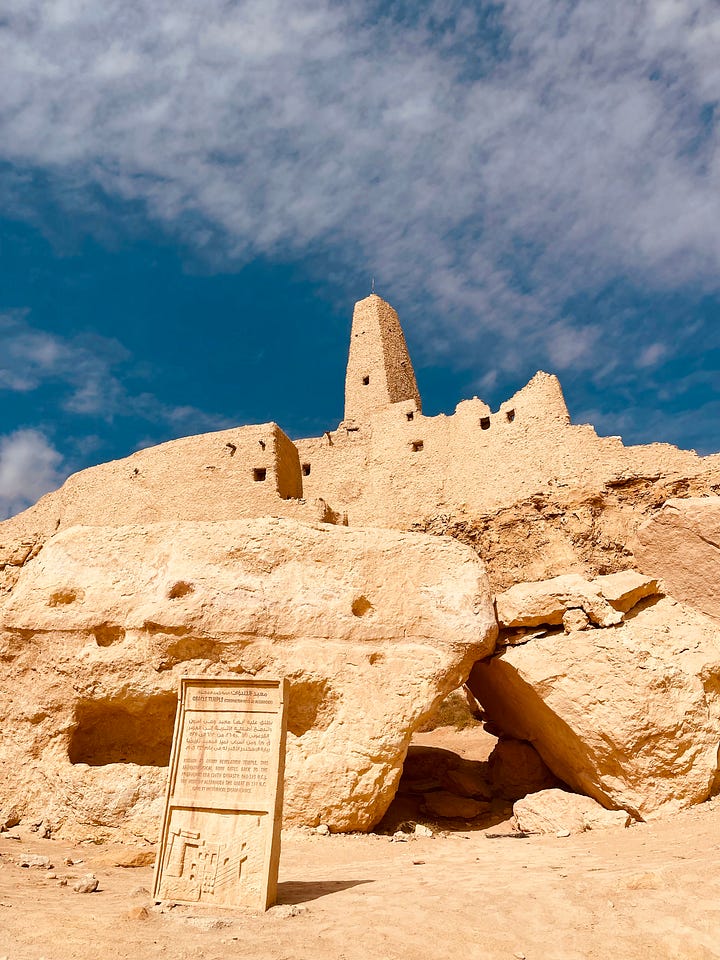
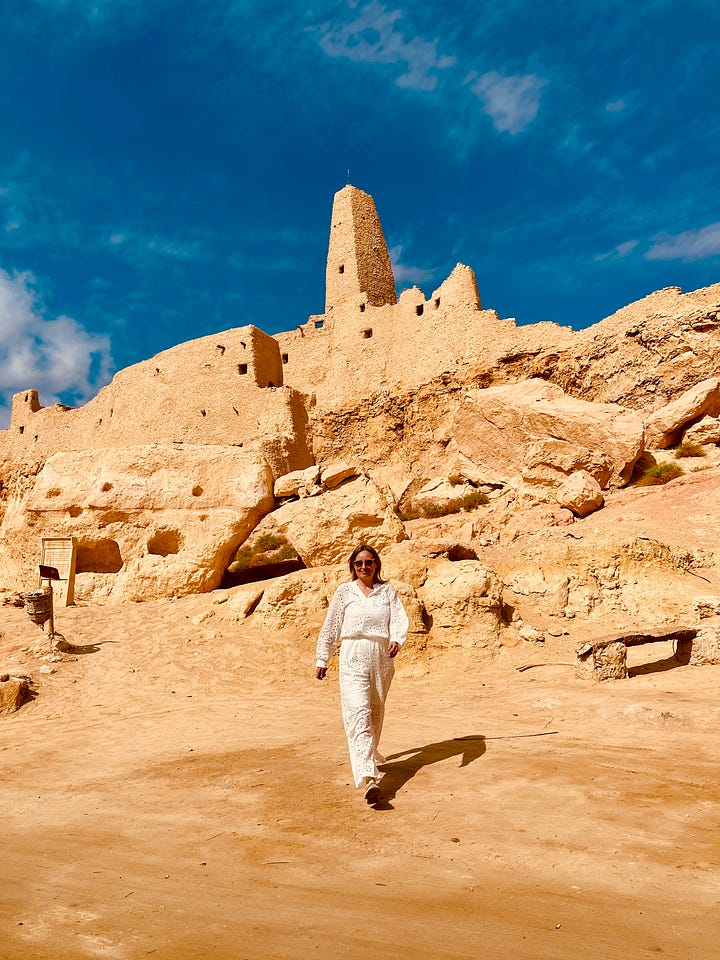
The Healing Salt Lakes
Siwa is home to surreal salt lakes where the water is so dense with salt that you’ll float effortlessly. Locals say the lakes have healing properties, especially for skin and respiratory issues. Who needs the Dead Sea when you have Siwa’s salt?
Given that I had been emotional that morning, I welcomed these healing properties with all my heart and floated in these lakes, soaking up on all the good energy. I felt my aura being cleansed and stepped out of the salt lake like a reborn human, ha! :D
My guide Adham, and tuktuk driver for the days, instructed me to wait in the sun for the water to dry on my body. Once dried, my whole body was full of salt and he showed me how to strongly rub it so as to get rid of dead skin. Now, I didn’t tell him about my Hammam experience in Istanbul where my dead skin was rubbed off already and squealed in delight when he helped me rub my back. Is there anything better than having someone rub the salt off your back after floating in a salt lake? I don’t think so! :D
He had brought a huge bottle of water to help me have a shower to get rid of all the salt and left me to dry once more.
You can find Adham on IG here by the way in case you ever make it to SIWA and need a tour guide.
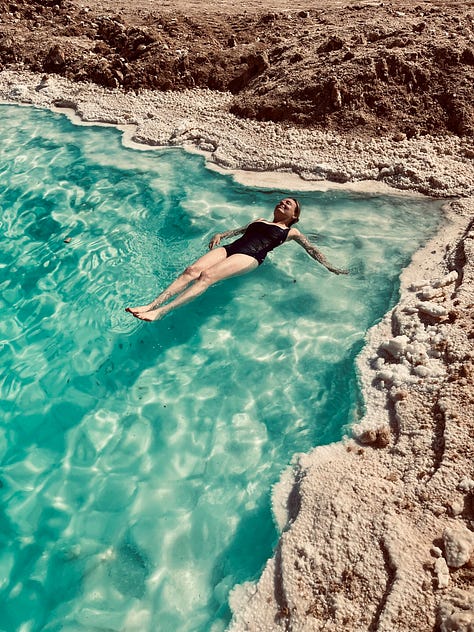
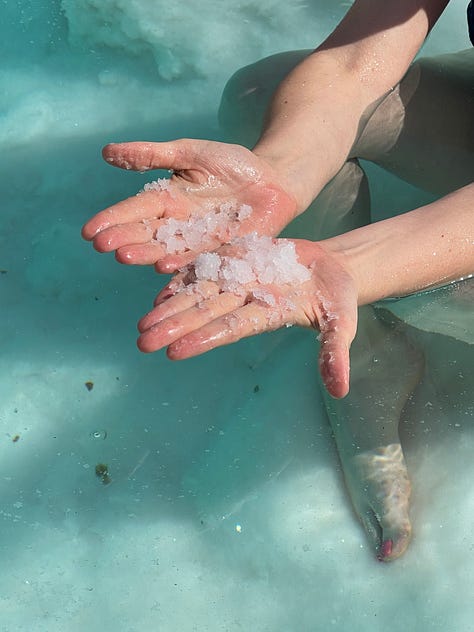
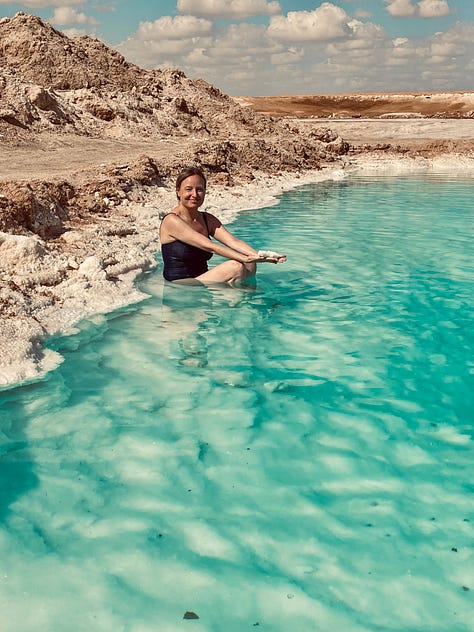
The Mountain of the Dead & Shali Fortress
The Mountain of the Dead is one of Siwa’s eeriest yet most fascinating sites. Imagine a hill dotted with ancient tombs carved into the rock, each whispering stories of Siwa’s past. Walking through, I felt the weight of time and mystery—a blend of history, adventure, and just a touch of spookiness!
As I entered one tomb of a priest who had served the Goddess Isis, I could feel him still there. Unfortunately there was another couple with their loud tour guide inside and so I didn’t get to meditate and connect to that priest spirit. I would have loved to hear his story. :-)
I also had a fantastic view over the oasis from the mountain and so I really enjoyed that location a lot!
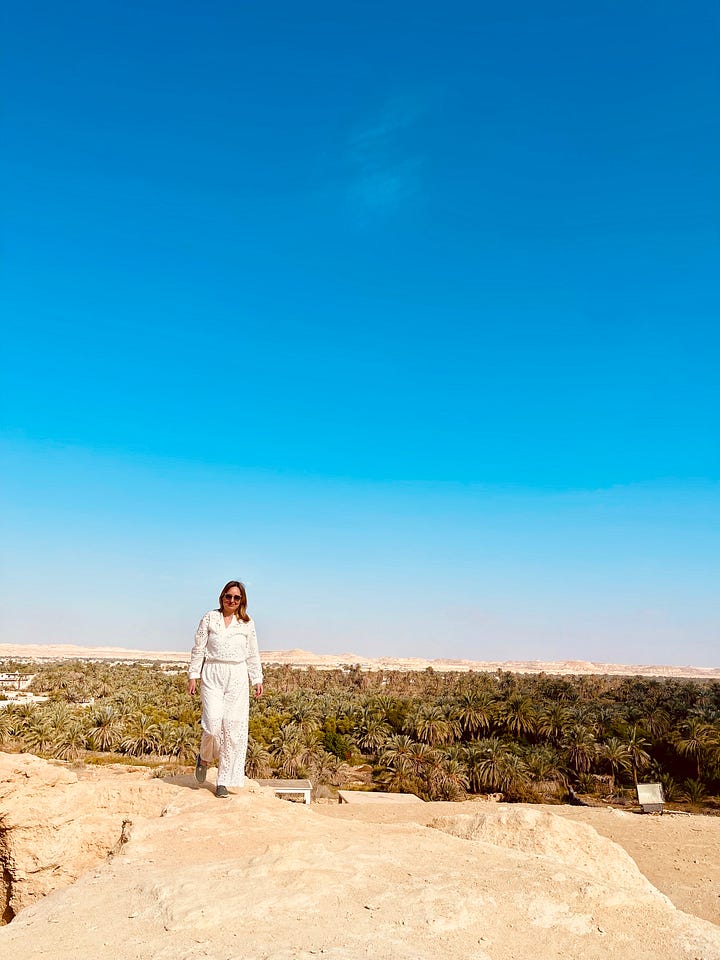
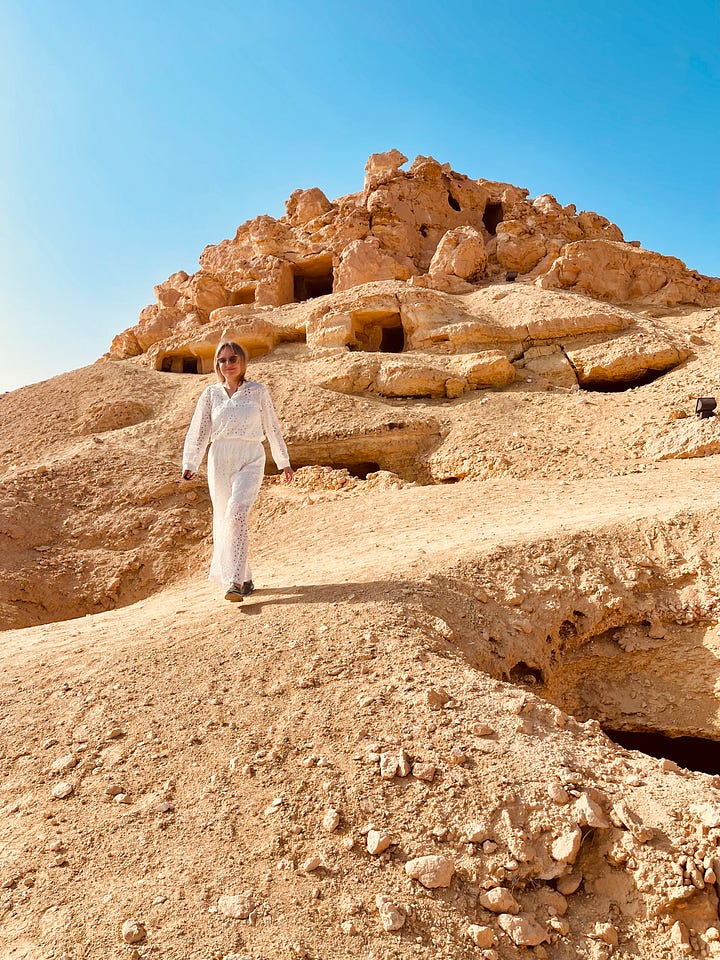
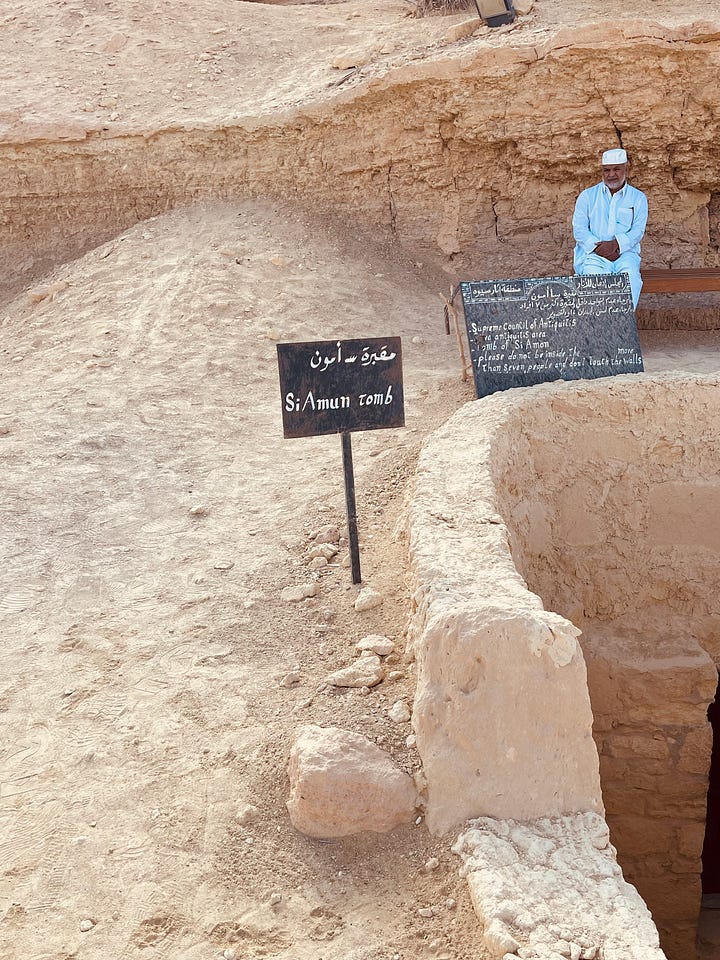
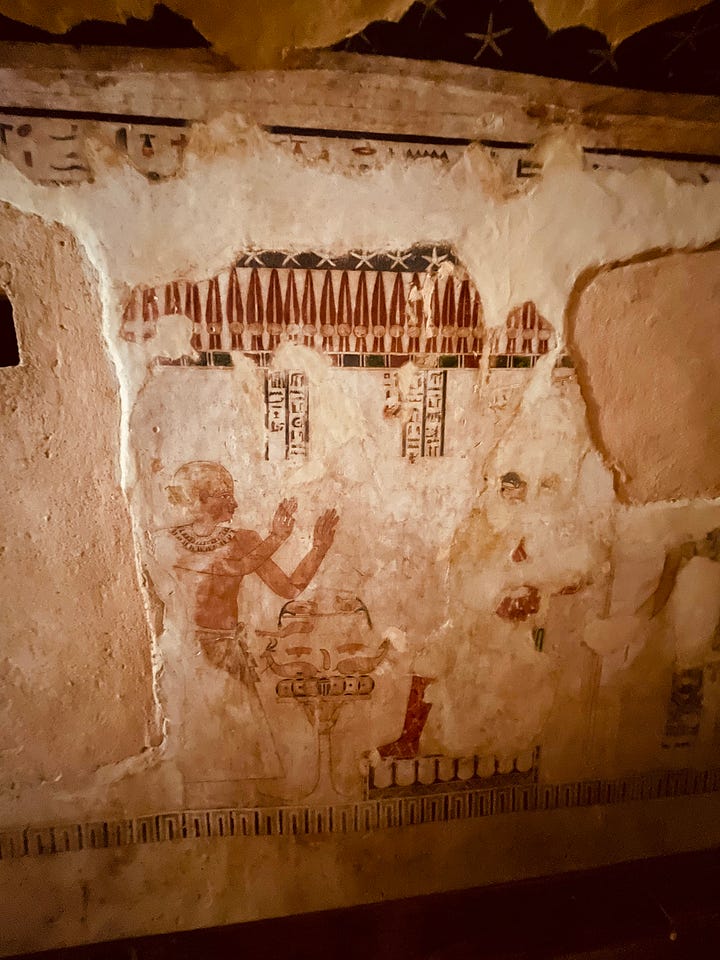
The Shali Fortress is the beating heart of old Siwa, built in the 13th century by the Siwan Berbers as a protective stronghold against invaders. Made of kershef—a mix of salt and mud—the fortress withstood centuries of wear but in 1926 Siwa experienced unusually heavy rainfall—a rare event in this desert oasis. The torrential downpour caused significant damage to the fortress, as the salt-based walls began to dissolve and collapse under the weight of the water.
This catastrophic event rendered much of the fortress uninhabitable, forcing many Siwans to abandon it and build new homes nearby. Despite its partial ruin, the Shali Fortress remains a powerful symbol of Siwa’s history, its weathered walls standing as a testament to both human ingenuity and the unforgiving forces of nature.
Wandering its narrow, labyrinthine paths, I couldn’t help but imagine the lives once lived within these ancient walls.
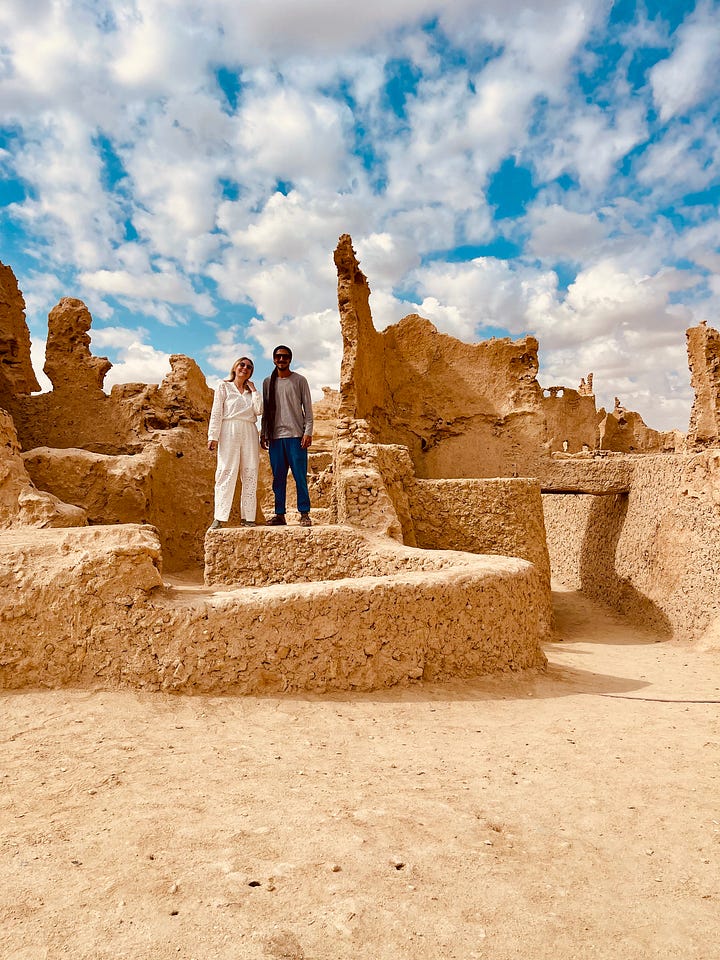
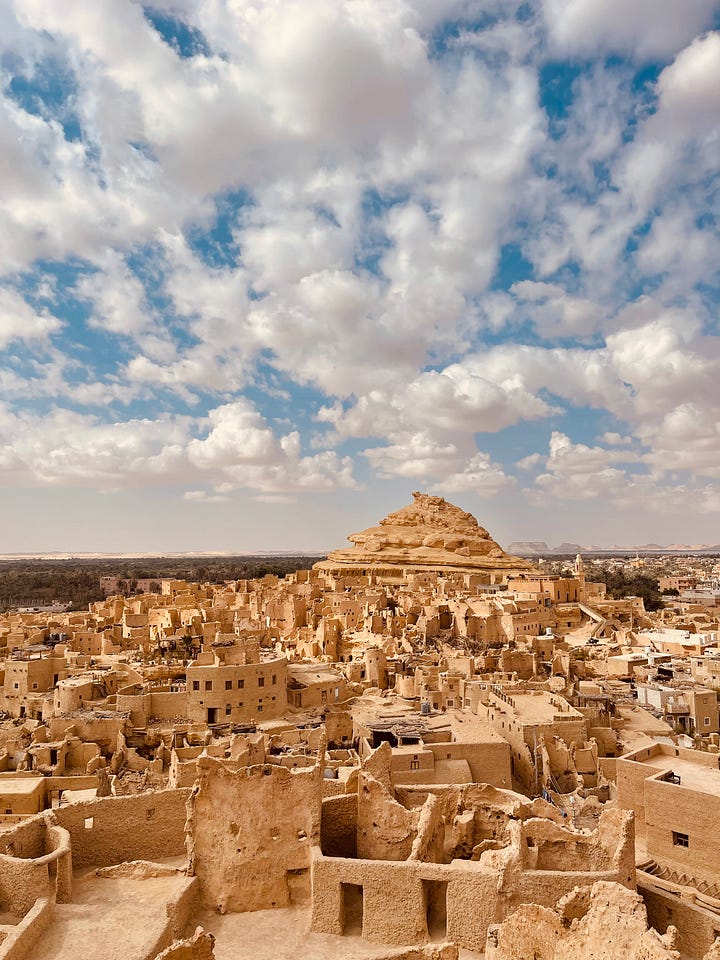
Siwa’s freshwater springs and hot springs
Siwa is a true oasis, boasting over 200 freshwater springs and hot springs that have sustained life in this remote desert for millennia. These springs aren’t just lifelines for agriculture—they’re also havens of relaxation and wellness.
Cleopatra’s Spring is the most famous, a natural bubbling pool steeped in legend. It’s said Cleopatra herself may have bathed here, though there’s no historical proof. Regardless, the warm, crystal-clear water is irresistible after a long day of exploring.
The Ain Al-Ghaba and Bir Wahed hot springs are also must-visits. Ain Al-Ghaba is a quiet retreat surrounded by palms, while Bir Wahed, nestled in the desert, offers a surreal experience under the stars. Each spring has its own unique vibe, but all promise a soothing connection to Siwa’s natural beauty.
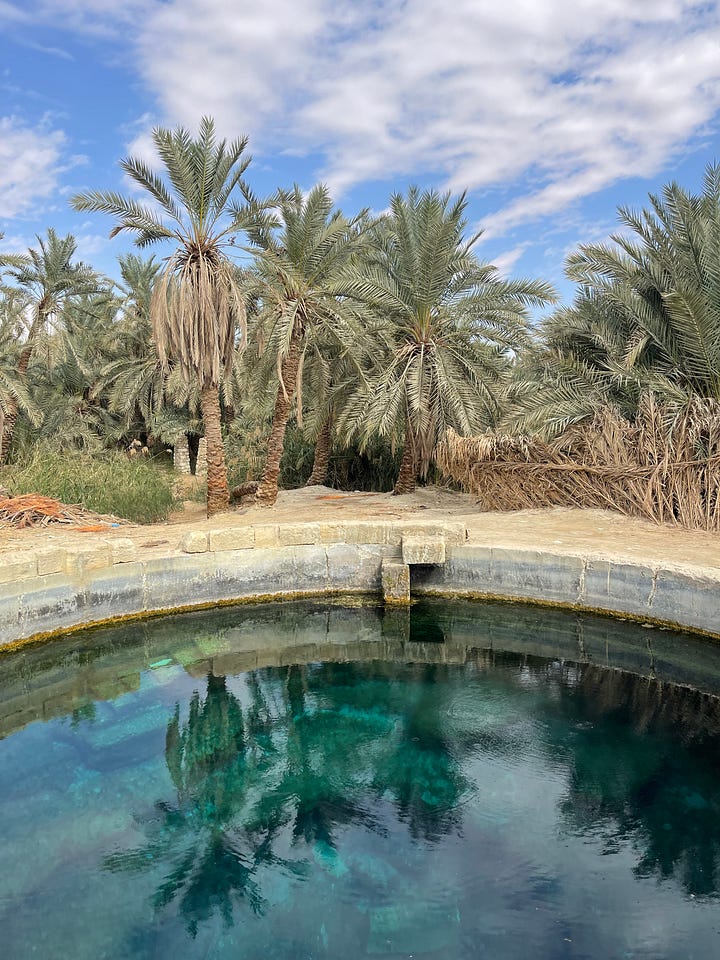

Visiting the dunes & the desert
Many tourists book jeep tours to drive on the dunes. I opted out of that experience and instead walked up the biggest dune to enjoy the sunset. It was more of a workout than I thought and was happy once on top. :D Luckily Adham, my tour guide, prepared a nice fresh mint tea for me with mint from the hotel’s garden we were visiting.

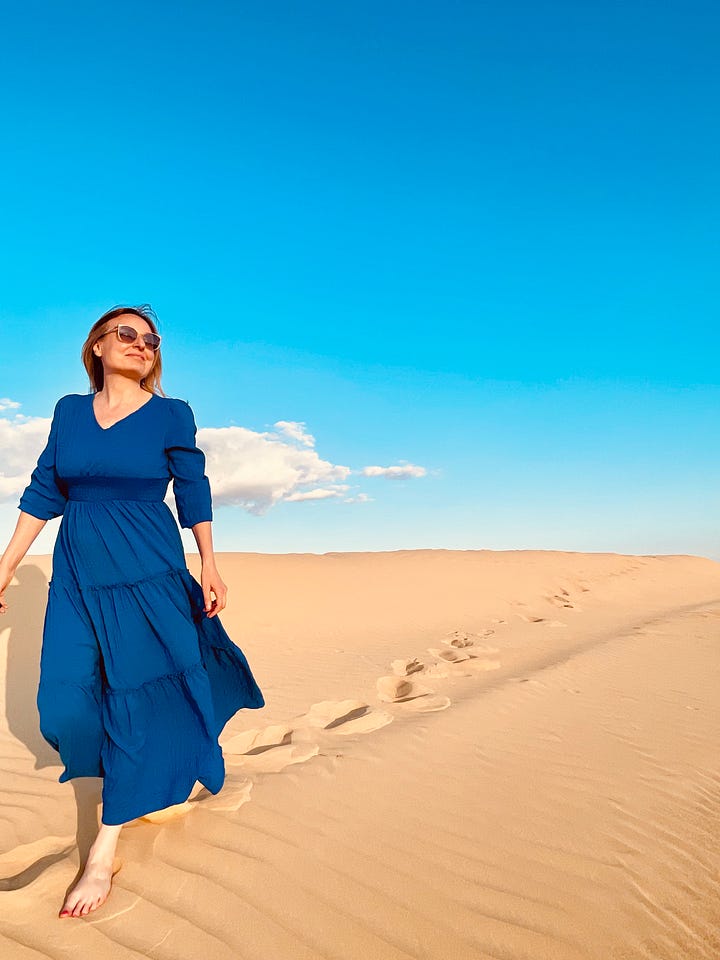
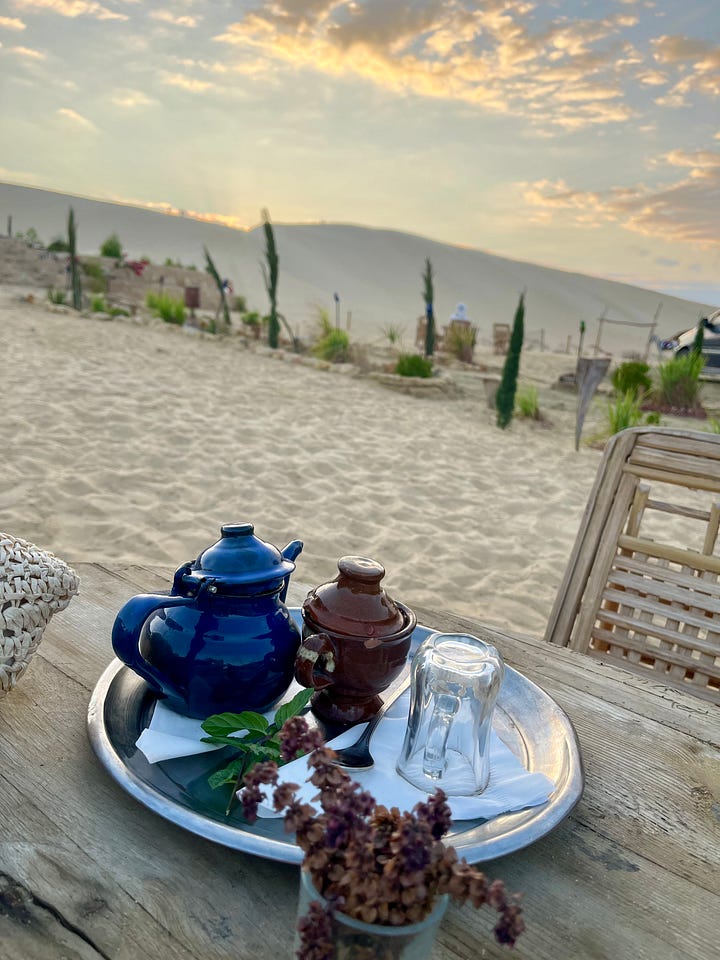
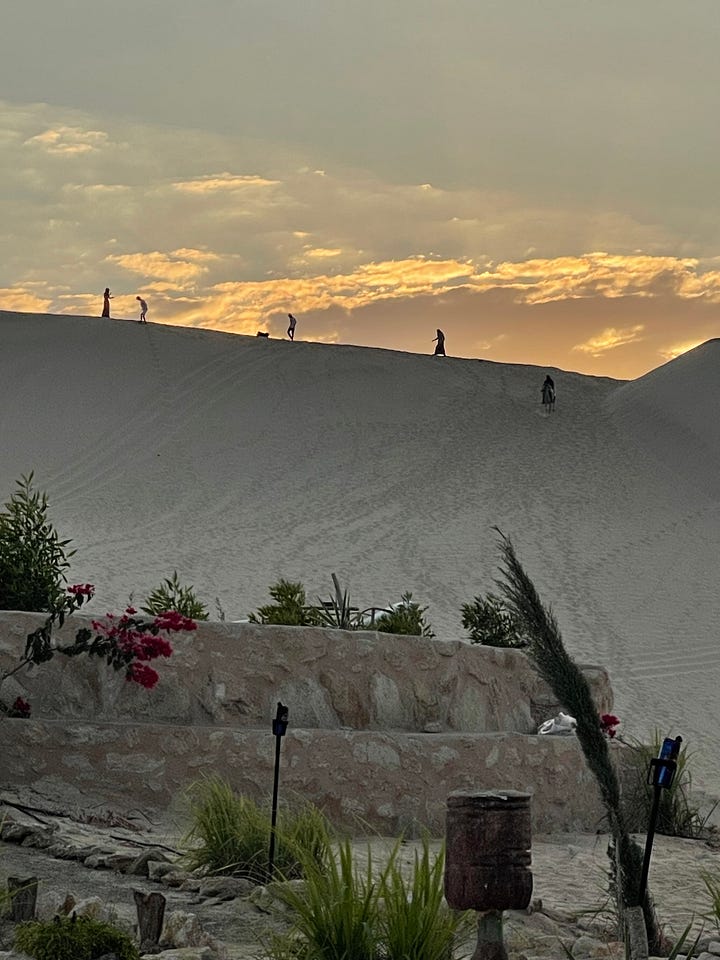
Beautiful sunset spot in Siwa
Most tourists head to Fatnas Island to watch the sunset. My tour guide knew me by now and suggested a local tip: to visit a hotel by a lake. Other than the tourists staying in that hotel there would be no crowds and so I gratefully accepted his offer. Unfortunately, I forgot the name of the place I went to otherwise I would share it now.
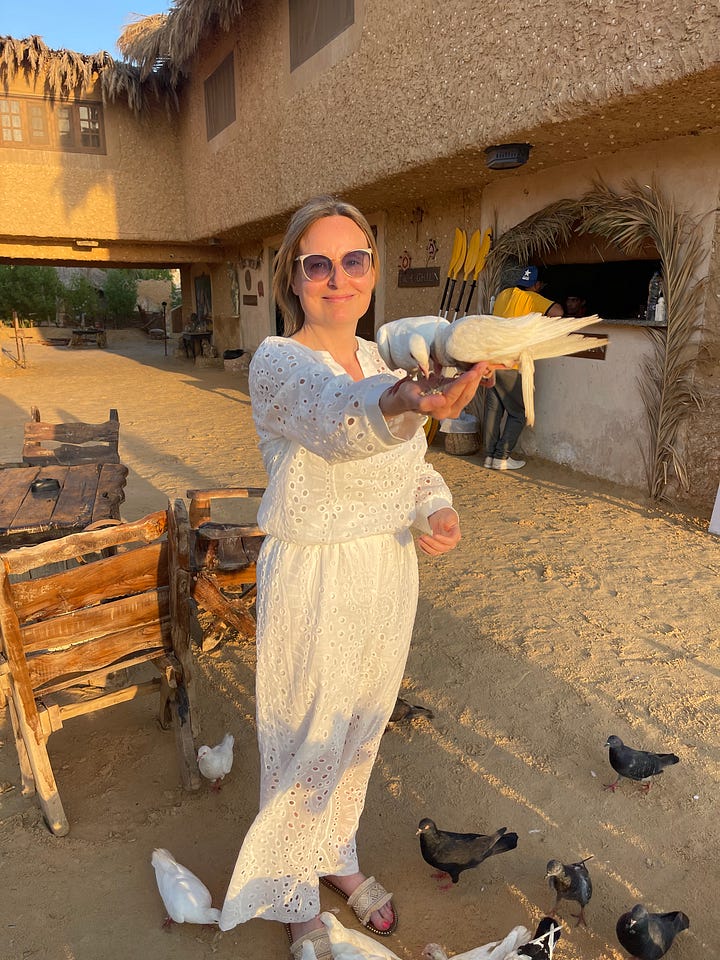
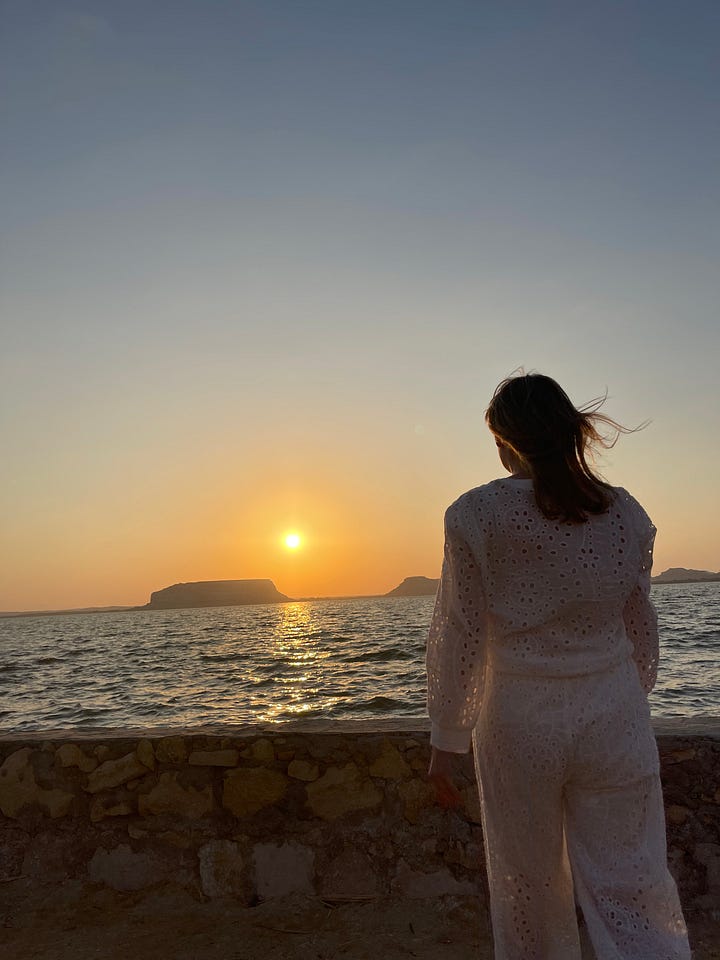
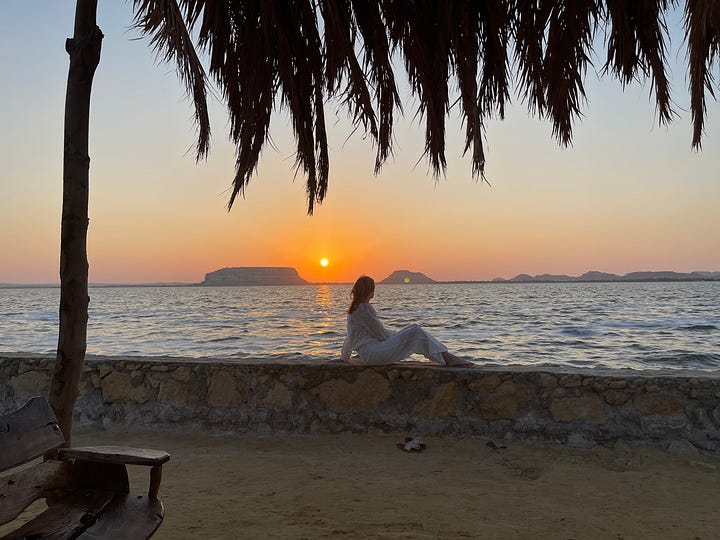
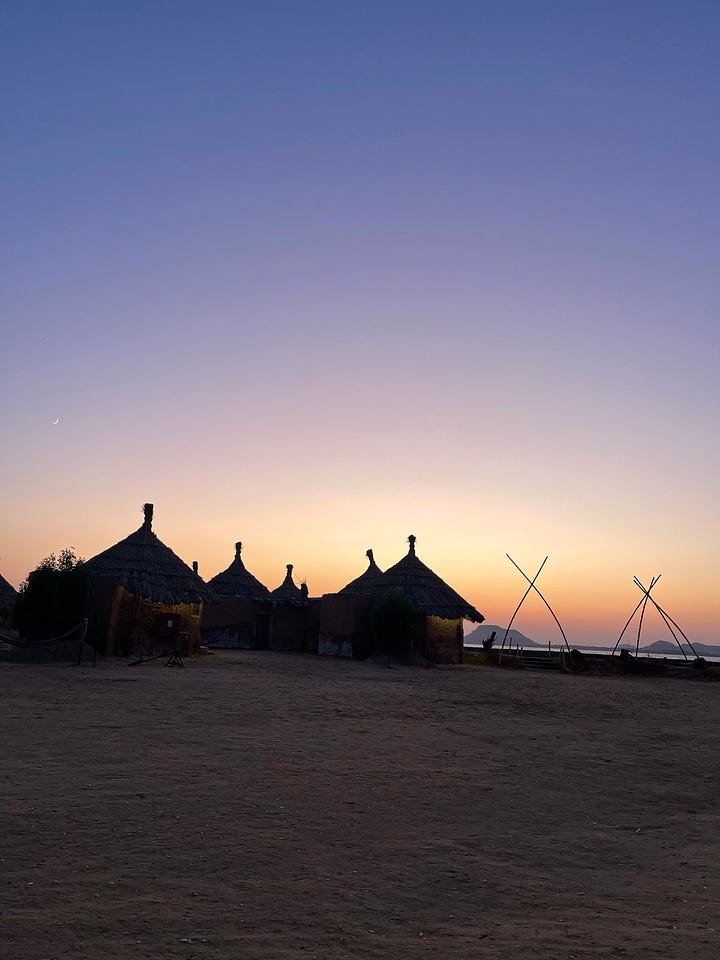
I smile as I share these pictures and stories. As hard as it was to get to this place and return to Cairo afterwards, this is one of my most precious traveling destinations. Maybe precisely because of how straineous it was to get to it. There is no mass tourism there yet. I have no doubt that within the next 5 years there will be an airport and commercial flights available, more hotels being built and masses of tourists arriving every day.
It was also precious to connect to the local Berber tribe. Funnily enough, not many of them were fond of Egyptians, especially those who moved to Siwa to open up hotels or restaurants.
Adham, my amazing guide for instance, was originally from Alexandria and him, his wife Sarah and their entire family moved to Siwa in search for a better, more peaceful life. But the local tribe loves him as he is a rasta man (much like Bob Marley) and they call him Mister Marley or Rastaman over there. :D
Alright, that’s it for my Siwa adventure. I will push myself to post about my Aswan trip in coming days and definitely before my Prague trip next week. :-)
Lots of love,
Lais

